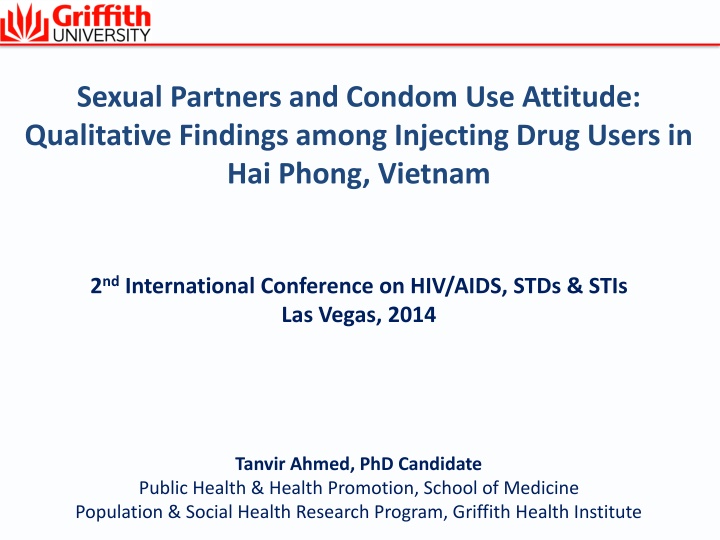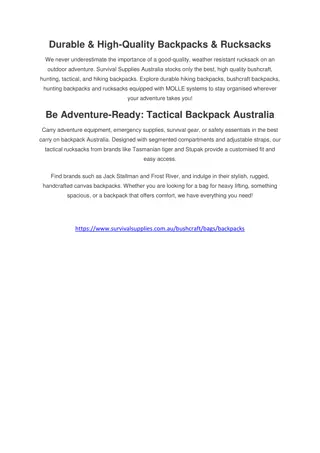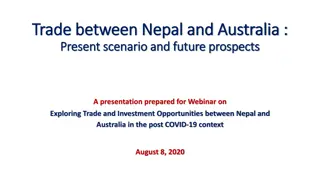
HIV Epidemic among Injecting Drug Users in Hai Phong, Vietnam
Explore the qualitative findings on sexual partners and condom use attitudes among injecting drug users in Hai Phong, Vietnam, presented at the 2nd International Conference on HIV/AIDS, STDs & STIs. The project delves into the HIV infection and behavioral risk factors, shedding light on the shifting epidemic in Vietnam since the 1990s, especially focusing on the IDU population. Key features, such as demographics, injecting practices, and sexual behaviors, are highlighted to provide a comprehensive overview of the situation in Hai Phong.
Download Presentation

Please find below an Image/Link to download the presentation.
The content on the website is provided AS IS for your information and personal use only. It may not be sold, licensed, or shared on other websites without obtaining consent from the author. If you encounter any issues during the download, it is possible that the publisher has removed the file from their server.
You are allowed to download the files provided on this website for personal or commercial use, subject to the condition that they are used lawfully. All files are the property of their respective owners.
The content on the website is provided AS IS for your information and personal use only. It may not be sold, licensed, or shared on other websites without obtaining consent from the author.
E N D
Presentation Transcript
Sexual Partners and Condom Use Attitude: Qualitative Findings among Injecting Drug Users in Hai Phong, Vietnam 2nd International Conference on HIV/AIDS, STDs & STIs Las Vegas, 2014 Tanvir Ahmed, PhD Candidate Public Health & Health Promotion, School of Medicine Population & Social Health Research Program, Griffith Health Institute
CONTENTS Project background Introduction Methods Findings Limitations Conclusion
RESEARCH BACKGROUND Research project HIV Infection and Behavioral Risk Factors among Injecting Drug Users (IDUs) in Hai Phong, Vietnam o A multiphase research o Phase 1 (Quantitative) and Phase 2 (Qualitative) Quantitative o HIV prevalence and Risk Factors o Correlates of Sharing Practices o Correlates of Condom Use Qualitative o Drug injecting and HIV Risk oSexual Behaviours, Partners and Condom Attitude
INTRODUCTION HIV epidemic in Vietnam HIV testing started: 1988 First HIV case detected (southern): 1990 First epidemic boom among IDUs (southern): 1993 Epidemic well-established among IDUs: 1995 Other groups affected (e.g. FSWs): 1995 Epidemic shifted (southern to northern region): 2000 Initially older people in southern part Later younger people in northern part
Introduction (1) Key Features of HIV Epidemic among IDUs Majority male (sampled 80-90%) & unemployed, Single (60-70%), young age (20-29 years), Short transition from non-injecting to injecting (8-14 months), Injecting heroine currently, Injecting in public places (rail lines, street, park), Involve in social injecting resource pool shared drug use High rates of sharing practices Being injected by others (dealer, friend) Majority sexually active (last 6 months) with multiple partners
Introduction (2) HIV epidemic in Hai Phong Location: East of Hanoi (102 km), close to sea Also close to heroine shipment route linking heroine producing Golden Triangle HIV Situation: First HIV case 1994. Reached 1% (1997) to 32.8% (1998); 60-70% till 2005 and dropped to 48% in 2009. Young IDUs, sexual mixing with FSWs and sharing Early diffusion and crossover between IDU & FSW
SIGNIFICANCE, AIMS & OBJECTIVES Significance Lack of a qualitative understanding on recent sexual transmission risk among IDUs. Because Previous research mainly quantitative, Younger IDUs, PLHIV or young People, Focus on ART, risk behavior, MMT program,
Significance, Aims & Objectives (1) Aim To highlight the drug injecting and sexual behaviors having transmission risk and allow an improved understanding of the potential factors that contribute to the high level of HIV prevalence. Objective To focus on the experiences and views of IDUs relating safe-sex practices, and To identify protective and non-protective condom use attitude with different partners
METHODS Design, Recruitment & Data Collection Qualitative (follow-up interviews) research design Fifteen IDUs (13 male & 2 female) participated Semi-structured (face-to-face) interview conducted Purposively selected by snowballing technique Convenient location used for interviews/discussion Each interview took 45 minutes (approximately) Two interviewers conducted the interviews (Vietnamese) One supervisor engaged in supervising & recruiting Topic guide with necessary probes and points used
Methods (1) Data Analysis Scripts reviewed to remove any personal identifier Transcribed from paper to file (verbatim) Translated (double checking, randomly back translation) Key themes, sub-themes identified (topic guide, objectives) Thematic analysis conducted manually (TA framework used) Presentation Direct quotes with recurring sub-themes presented in tables Relational diagram drawn by partners types with attitudes
RESULTS Profile of Respondents Access different social networks Mixed groups (young, old, HIV infected, FSWs)
Results (1) Sexual Behaviour All had sexual debut in the early twenties. First experience majority with FSWs or girl friends Engage in relationship other than wives or regular partners Having sex with FSWs is common Contexts of Involving Sex with FSWs Marital status Younger or older Special event celebration (birthday, cultural program) Having extra money
Results (3) Views on Condom Use Young & new injectors frequently engaged in sexual behaviours than older They have interesting views on not using condoms Contexts of Not-using Condoms Not considered as important Negotiate with FSWs Not considered as necessary Lack of awareness Clients do not like Partner does not want Exchange drug or extra money Wrong self-assessment
Results (6) Contexts of Condom Use HIV infected and older IDUs mainly engaged in safe-sex. The contexts include: Suspicious about STIs Family consciousness Client negotiation (empowerment of FSWs) Protection against pregnancy Scare about HIV infection
Results (9) Relational Diagram Transmission risk by partner types and condom use attitudes
LIMITATIONS Limitation Not representative (participants from a broader research) However our mixed group includes multiple social network Focus only sexual behaviours and condom use attitudes not presented accessibility to HIV prevention services Getting free condoms did not appear as protective attitude Few participants with con-current multiple partner relationship However we highlighted their previous experiences
RESEARCH IMPLICATION & CONCLUSION Risk of sexual transmission exists among IDUs Young male and female Protective attitudes should be encouraged to sustain safe practices HIV infected IDUs and older male Non-protective attitudes should be addressed to convert into safe practice Young male and female (unmarried) Safe-sex education should be strengthened with a focus on partner relation (types of partners) Knowledge on HIV transmission and prevention should be strengthened






















